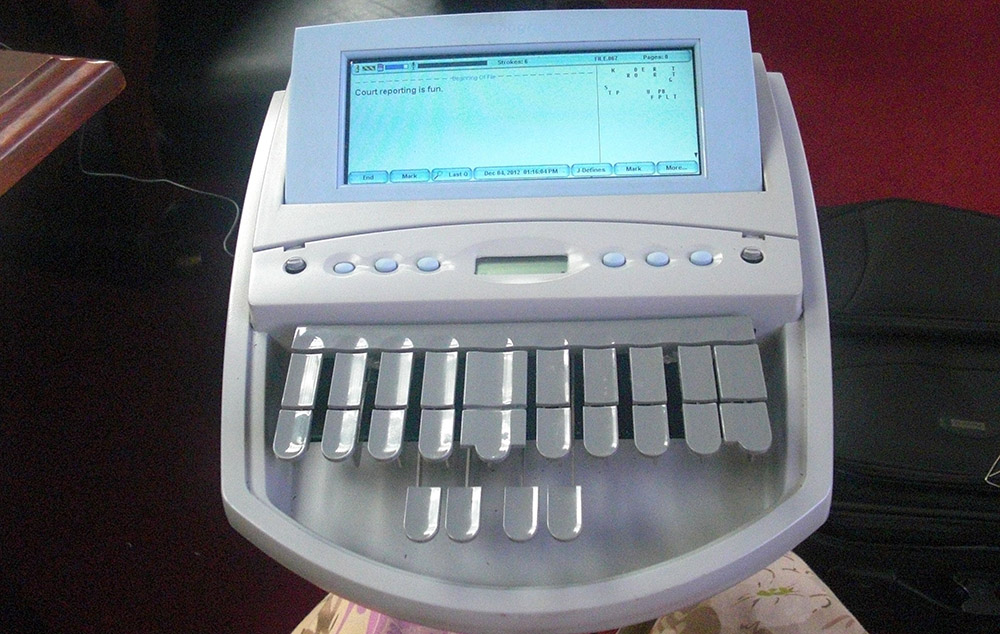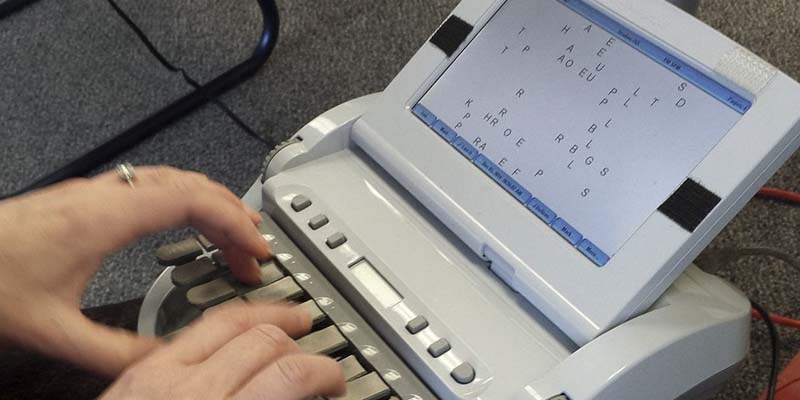Why Court Coverage Is Necessary for Accurate Legal Documentation
Court reporting plays a critical function in the lawful system. It gives an exact, verbatim record of court procedures. This accuracy is essential for maintaining the stability of legal procedures. Errors in paperwork can bring about substantial effects for case outcomes. As lawyers significantly rely on these transcripts, comprehending the nuances of court reporting becomes needed. What variables contribute to the performance of this practice in making sure justice?

The Function of Court Reporters in the Legal System
Court reporters serve as the important web link between talked statement and created record in the legal system. They are in charge of capturing verbatim accounts of court procedures, ensuring that every word talked is properly transcribed. This transcription ends up being an official document, necessary for charms, legal research, and keeping the integrity of judicial processes. Stenotype reporter make use of specialized devices and methods, such as stenography, to facilitate this specific paperwork. Their role extends beyond plain transcription; they must understand legal terms and court procedures to ensure clearness and context in their records. Furthermore, stenotype reporter keep privacy and impartiality, adding to the overall justness of the legal procedure. Their job is important for judges, events, and lawyers entailed in litigation, as it gives a reliable account of procedures that can be referenced in future lawsuits. With their proficiency, stenotype reporter copyright the standards of justice within the lawful system.
Guaranteeing Accuracy in Legal Records
Keeping precision in lawful transcripts is paramount to the honesty of judicial process. Court press reporters play a vital role in catching every spoken word during trials, depositions, and other legal setups. Their know-how in stenography and familiarity with lawful terms guarantee that records show the precise dialogue and subtleties of the case. Any noninclusions or mistakes can result in false impressions, which may adversely influence the outcomes of lawful disputes.
To achieve this degree of accuracy, stenotype reporter utilize sophisticated innovation and rigorous training to enhance their transcription skills. They likewise take part in comprehensive review procedures, cross-checking their job for precision prior to settling papers. Additionally, guaranteeing appropriate context and speaker recognition includes another layer of dependability to the transcripts. Eventually, exact lawful records function as fundamental papers that copyright the justice system, allowing all celebrations involved to depend on a specific record of proceedings.
The Relevance of Real-Time Coverage
Real-time coverage has actually become a substantial improvement in the field of court coverage, enhancing the effectiveness and ease of access of legal procedures. This technology permits court press reporters to transcribe talked dialogue immediately, supplying prompt accessibility to transcripts for lawyers, judges, and other legal workers. With real-time coverage, individuals can swiftly evaluate declarations and arguments, promoting more informed decision-making during process.
Moreover, this capacity is specifically useful in complicated cases where fast comprehension of details is crucial. It promotes clearer interaction among all parties, lowering the likelihood of misconceptions. Furthermore, real-time records can be shared from another location, profiting those incapable to attend face to face, thereby widening accessibility to justice. As legal environments end up being increasingly dynamic, the role of real-time reporting in making certain accurate and prompt details circulation can not be overemphasized, making it a crucial tool in contemporary court reporting practices
Lawful Paperwork and Its Effect On Case Outcomes
Efficient lawful documents plays a necessary role in navigate to these guys shaping situation results, because it offers as the structure whereupon lawful debates are developed. Exact records ensure that all significant truths, statement, and evidence are plainly presented, allowing lawyers to create compelling cases. Errors or noninclusions in documents can bring about misinterpretations, which might negatively affect the court's decision.
Additionally, efficient paperwork facilitates effective situation monitoring, making it possible for lawyers to quickly reference essential information throughout proceedings. Judges and courts depend greatly on recorded proof to comprehend the context and nuances of a situation. The high quality of lawful paperwork straight influences the reputation of debates presented in court.
Eventually, accurate and detailed legal documents not only improves the possibilities of positive results however likewise maintains the honesty of the legal procedure, guaranteeing that justice is served precisely and relatively.
Innovations in Court Coverage Innovation

As modern technology proceeds to develop, improvements in court coverage have actually substantially changed just how lawful paperwork is produced and handled. Advancements such as real-time transcription software program enable stenotype reporter to deliver immediate access to records, improving the efficiency of legal proceedings. Digital tape-recording systems have actually additionally arised, supplying a dependable back-up to traditional approaches, while expert system is increasingly being integrated into the paperwork procedure, enhancing precision and minimizing human error.
In addition, cloud-based systems facilitate secure sharing and storage space of court records, making sure that lawful teams can access needed files from anywhere. Remote court coverage has actually become commonplace, enabling attorneys to join process despite geographical location. These technical advancements not only streamline the court reporting procedure yet likewise boost the total integrity of legal paperwork. As an outcome, the legal area is much better geared up to satisfy the needs of contemporary litigation, ensuring that justice is served successfully and successfully.
Often Asked Inquiries
What Credentials Do Court Reporters Generally Need?
Stenotype reporter usually require a secondary school diploma, specialized training in see this site court coverage, and proficiency in shorthand or voice writing. Accreditation and licensure needs vary by state, boosting their credibility and ensuring specialist standards are fulfilled.
How Do Court Reporters Maintain Privacy?
Court reporters preserve confidentiality by adhering to strict moral standards, using secure approaches for keeping and transferring transcripts, and guaranteeing delicate information is shared just with certified people included in the legal process.
Can Court Reporters Work in Other Setups Besides Courts?
Stenotype reporter can indeed work in various settings beyond courts, resource including depositions, organization meetings, and legal settings up. Their skills in catching spoken language precisely make them important in any atmosphere needing specific documents.
What Is the Typical Income of a Court Reporter?
The ordinary salary of a court press reporter differs extensively, typically ranging from $50,000 to $100,000 annually, relying on variables such as experience, place, and the specific sector in which they are used. (durham court reporting)
How much time Does It Require To Become a Licensed Stenotype Reporter?

Court reporters serve as the crucial web link in between talked testament and composed document in the lawful system. In addition, court reporters keep discretion and impartiality, contributing to the total fairness of the legal procedure. Innovations such as real-time transcription software permit court press reporters to provide instant access to transcripts, boosting the performance of lawful process. Court reporters typically require a high college diploma, specialized training in court reporting, and effectiveness in shorthand or voice writing. Court reporters can without a doubt work in different setups past courts, consisting of depositions, business conferences, and legal assemblies.